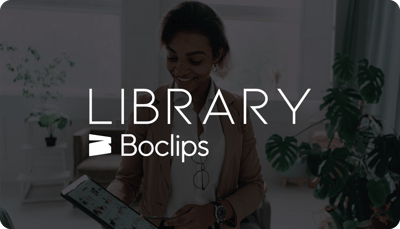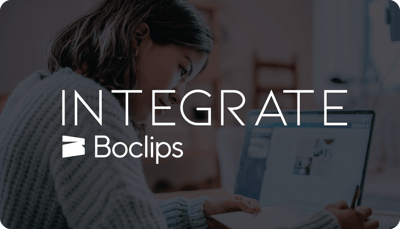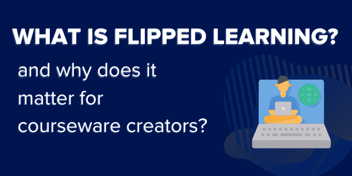With so many teaching models emerging - blended, hybrid, and flipped learning, to name a few- it can be difficult to pin down exactly what each one involves. This is especially true when they all aim to improve student engagement with targeted use of technology.
In short, flipped learning is a methodology that involves students working on tasks at home that are traditionally completed at school, and vice versa. This means that students learn the content of the lesson beforehand, perhaps by watching an instructional video or reading a text, so that time in class can be spent on discussion, group work, peer-to-peer support, and other active learning tasks.
Inverted classroom models allow students to learn in a way that suits them: they’re not constrained by time limits or a classroom environment, plus they may have a greater choice of the learning material available to them. It also encourages higher-order thinking in class for students who feel confident about the topic, while allowing teachers to give more assistance to those who are struggling. Most importantly, flipped learning empowers students to take ownership of their studies: a vital skill that puts them on the path to lifelong learning.
Here’s our content partner, Hip Hughes, talking about why video is an important tool for flipped classrooms:
Now, students and teachers everywhere require more flexible learning methods and flipped learning fits the bill. Not only does it encourage independent learning but it also optimizes the time that a class can spend together, whether that's in-person or online. With many schools closed or using a roster system for in-person learning, it’s vital to make the most of class time. Many students miss the collaborative atmosphere of the classroom or need more targeted help, so it’s counterintuitive to complete activities that could have been done independently.
So what does this mean for instructional designers? The good news is that many online courses and tools have been developed with independent or distance learning in mind. But that’s not to say that every digital learning tool is flipped-classroom ready.
One concern that teachers and administrators may have when it comes to inverted learning is whether or not students will complete the required pre-work. The key is to build engagement so well-designed in-class activities, projects, and discussions go a long way to incentivize students to complete work before the lesson. Plus, reporting features can help educators track engagement and build a picture of which kinds of materials are most effective for independent learning.
Perhaps the most important requirement for flipped learning courses is a broad and engaging selection of content. As Hip Hughes explains in the clip above, video is the perfect tool for independent learning because it’s a medium that students are familiar with and engaged by. Video also provides additional context to written material and can be a good alternative or learning aid for students who struggle with extended reading.
However, as with any learning resource, variety is important. Not only do students have a range of preferences when it comes to video styles- some may like documentaries while others prefer animations- but different kinds of videos allow for a broad exploration of the subject matter. For example, in preparation for a lesson on WW1, they may review some archive footage, a more recent interview with a veteran, and an explainer on historical context. A video integration provider such as Boclips is an ideal solution: with more than 2 million videos from over 250 world-class educational producers, your users will never be short of instructional videos to share with their students.
To discover more actionable ideas for incorporating flipped learning into your courseware, take a look at our blog post with ideas for video-based activities. Ready to make learning more captivating with video? Get in touch to find out more about how the Boclips video library and integration options can help you meet your customers’ learning needs.
Suzanna Taylor
Suzanna is a marketing specialist at Boclips. As a former languages teacher, she is passionate about quality, accessible educational resources.
- #Classroom
- #Video in Digital Learning
- #Educational Videos
- #Tips for Using Video
- #Video Content Partners
- #Boclips for Publishers
- #Issues in Education
- #Educational Videos by Subject Area
- #News and Announcements
- #Events & Holidays
- #Video and Teaching Tools
- #Teaching Methodologies
- #Education Videos
- #Video and Digital Literacy
- #Short Educational Videos
- #Instructional Design
- #Multimodal Learning
- #Video and Student Safety
- #Accessibility in Education
-3.png?width=390&height=223&name=Untitled%20design%20(2)-3.png)


.png?width=1152&height=660&name=Copy%20of%20Untitled%20Design%20(1).png)




